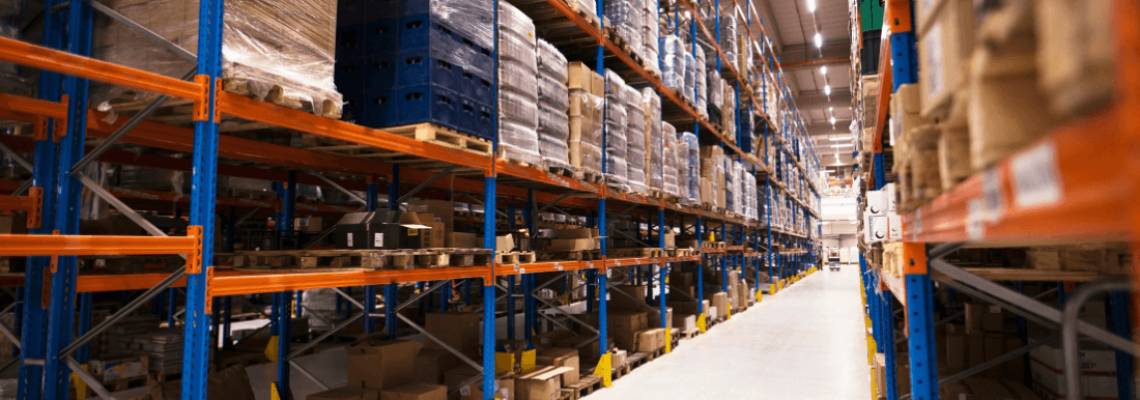 27 Feb 2024
27 Feb 2024
Strategies to Maximise the Use of Warehouse Storage
There has never been a more pressing demand for warehouse efficiency improvements. Supply chain demand is rising, yet it’s sometimes expensive, time-consuming, or unfeasible to increase warehouse capacity. Optimising existing resources is crucial for facilities, so improved warehouse organisation is essential.
Online buyers expect to get their orders in eight days on average, and 92% indicate that shipment speed influences their choice of products. For warehouses to meet these demands and please customers who are becoming more and more accustomed to agility, they must become more efficient.
Organising the warehouse may be the most important factor in increasing productivity. In light of this, follow these five suggestions for setting up your warehouse to maximise production.
5 Effective Strategies for Warehouse Storage
-
Audit Your Warehouse Space
A thorough evaluation of your current warehouse helps you to find any inefficiency or bottleneck in the flow of goods. This will enable you to utilise the available space in your warehouse more wisely.
Are workstations, storage spaces, and traffic lanes set up to optimum efficiency? Rearranging these sections might result in a more efficient workflow.
Putting in place a strong inventory management system is also crucial. You can ensure that goods are stored effectively and prevent overstocking by tracking inventory levels and movement.
-
Create a Clear Labelling System
Labelling is a part of a warehouse organisation that is disregarded. If workers don’t comprehend the system, no matter how well-organised the warehouse is, productivity won’t increase. Due to a clear labelling system, picking time is decreased when employees can find what they need more quickly.
First, label shelves with easily readable magnetic labels that are vividly coloured. This will help workers identify and read them more quickly. When reorganising inventory owing to changing seasonal demand, using magnetic alternatives also makes label changes easy.
-
Maximise Available Space
There is often unseen, or rather unused, space available in warehouses. 20-30% of inventory is out-of-date or dead, taking up valuable space that could be used for in-demand goods. Warehouses can eliminate this waste by monitoring which products are moving and which aren’t. Rearrange aisles to make the most available warehouse space after removing unnecessary items. Vertical space is one of the easiest methods to boost capacity. Add a row of mezzanine storage or stack racks higher to make the most of this area. Narrowing aisles is another approach to maximise storage capacity. Entire warehouse aisles can be made narrower to accommodate one or two extra shelves.
-
Continuous Improvement in Warehouse
Having an organised warehouse is a continuous process. Warehouses must adjust to changing trends and need to continue operating at high levels of efficiency. To facilitate continual changes, facilities should put in place a system of continuous data tracking and review.
Continue monitoring the identical metrics from the initial audit after making any modifications. Anticipate some initial disturbances, but think about making more adjustments if, after some time, traffic flow, picking rates, or other indicators don’t improve. Facilities will be able to compete with ever-more-efficient rivals if they are constantly searching for areas to optimise.
-
Organise According to Demands
Lack of knowledge of the Pareto Principle is the reason for inefficiency in warehouse operations. This hypothesis states that 80% of effects result from 20% of causes. This is seen in warehousing, where in many facilities 20% of the items account for 80% of the activity.
Warehouse managers should rearrange their floor design by demand to adjust for this imbalance. The 20% of products with the most demand ought to be the easiest to find and pick up, requiring the least amount of time and travel. The remaining 50% of the inventory should be the most accessible after that, with about 30% of the total seeing modest picking rates.
Remember that these categories can, and probably will, change in the future. Warehouses should closely monitor consumer trends and modify their layouts in response to shifts in demand.
Conclusion
Organising a warehouse is a lengthy, continuous, and difficult process. While it may seem difficult, boosting operational efficiency is a vital step. Businesses may increase agility, productivity, and profitability by investing more time and energy into streamlining operations and warehouse floors.
While not a comprehensive list of methods to enhance warehouse organisation, these five steps cover the most important essential aspects. Facilities can achieve significant organisational improvements and increased productivity by implementing these strategies. If you are unable to organise your warehouse storage, you can connect with professionals. PAL Line Pte Ltd will help you to increase the efficiency of your warehouse!
